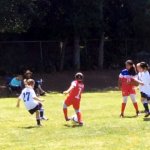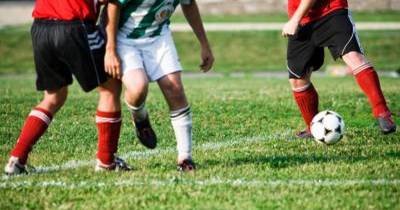 Communication is an essential tool for someone training young kids to play soccer. Just as essential, I believe, is for the trainer to have an understanding of the strengths and weaknesses of the players with whom he is working. Training sessions with diverse skill levels are detrimental to the skill development of all the players involved. One thing trainers need to do is to ensure that training sessions are built with the skill of the kids involved. And, as mentioned, avoid placing weaker kids with stronger kids for training purposes regardless of age. Some clubs are going to a data system where each child is rated for soccer ability and athleticism, given a score, and then placed in a training group consistent with that score (not based on age). This ensures all kids are in groups where they are challenged and can excel.
Communication is an essential tool for someone training young kids to play soccer. Just as essential, I believe, is for the trainer to have an understanding of the strengths and weaknesses of the players with whom he is working. Training sessions with diverse skill levels are detrimental to the skill development of all the players involved. One thing trainers need to do is to ensure that training sessions are built with the skill of the kids involved. And, as mentioned, avoid placing weaker kids with stronger kids for training purposes regardless of age. Some clubs are going to a data system where each child is rated for soccer ability and athleticism, given a score, and then placed in a training group consistent with that score (not based on age). This ensures all kids are in groups where they are challenged and can excel.
But, that is not the point I wanted to discuss. I mentioned before how coaches sometimes give instructions that, as we say in the legal business, assumes facts not in evidence. What I mean is that coaches will tell kids to pass in games, but the kids lack the ability to catch. If they cannot catch the ball, how can they pass the ball? My experience with kids is that if they have the ball with time and space, they generally do something smart with it. From my observations, one of the main reasons young players lack time and space with the ball is because (1) they lack mastery over the ball so that when a ball is presented to them (from a teammate or a loose ball), they lack the ability to control it quickly, and (2) they lack the ability to run off the ball to open space where they can receive it with time and space. Note in (2), a proper catch is still required. We can save (2) for another day.
I noticed this with my girls’ team in year 2 – at our first tournament. When you play better teams, your players’ time and space gets squeezed. My girls just couldn’t get a clean handle on the ball, thus, rarely had it with the time and space they needed to do something helpful with it. From then on, we worked on traps. All kinds. Trapping rollers, bouncers, line drives, punts. You name it. Even then, I lacked an understanding of the technique to properly teach the technique. Through research, assistance from other coaches, and trial and error, our system was/is: (1) relaxed foot (angled 45 degrees to ground) (we called it a “loose tooth”), (2) foot slightly off the ground where contact with center of the ball is likely, and (3) encouragement to catch the ball in front of your body, not underneath. The whole system was referred to as “peanut butter feet” as opposed to “concrete feet.” Not sure why. It just fit.
...
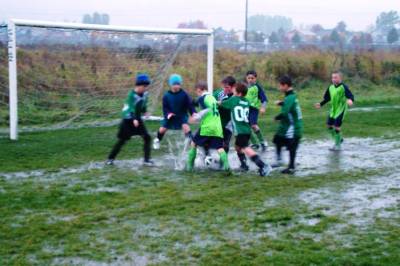




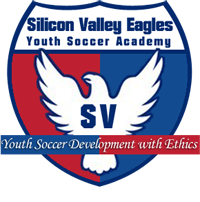
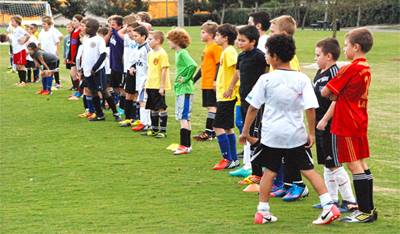 Trying out for a sports team can be a scary process.
Trying out for a sports team can be a scary process. 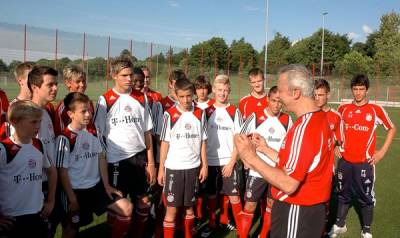 1. Teach Your Players the Skills They Need. Strong Basic Skills win games.
1. Teach Your Players the Skills They Need. Strong Basic Skills win games. Communication is an essential tool for someone training young kids to play soccer. Just as essential, I believe, is for the trainer to have an understanding of the strengths and weaknesses of the players with whom he is working. Training sessions with diverse skill levels are detrimental to the skill development of all the players involved. One thing trainers need to do is to ensure that training sessions are built with the skill of the kids involved. And, as mentioned, avoid placing weaker kids with stronger kids for training purposes regardless of age. Some clubs are going to a data system where each child is rated for soccer ability and athleticism, given a score, and then placed in a training group consistent with that score (not based on age). This ensures all kids are in groups where they are challenged and can excel.
Communication is an essential tool for someone training young kids to play soccer. Just as essential, I believe, is for the trainer to have an understanding of the strengths and weaknesses of the players with whom he is working. Training sessions with diverse skill levels are detrimental to the skill development of all the players involved. One thing trainers need to do is to ensure that training sessions are built with the skill of the kids involved. And, as mentioned, avoid placing weaker kids with stronger kids for training purposes regardless of age. Some clubs are going to a data system where each child is rated for soccer ability and athleticism, given a score, and then placed in a training group consistent with that score (not based on age). This ensures all kids are in groups where they are challenged and can excel.